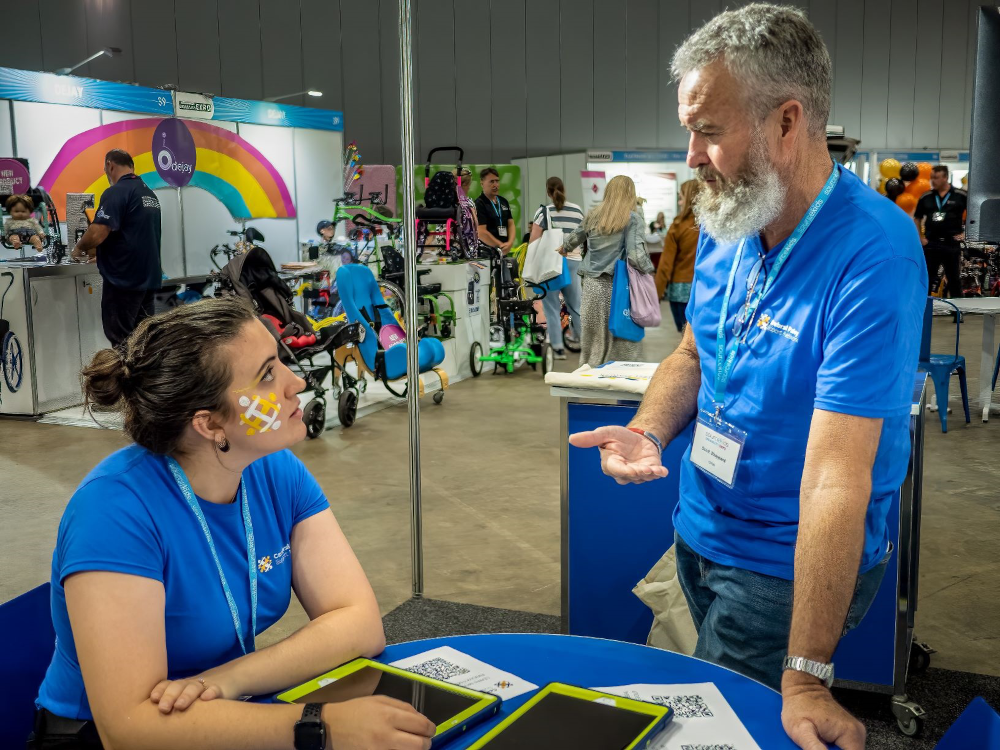When Victorian-based not-for-profit organisation, Cerebral Palsy Support Network (CPSN) conducted a review of their organisation, they discovered that outdated systems and manual processes were jeopardising their ability to support the community. This discovery presented an opportunity to enhance the way they leveraged modern technologies to increase the efficiency, mobility and digital capability of their services and staff for years to come.
CPSN has served individuals and families living with cerebral palsy for over 20 years. With a membership base of 1700+ individuals and 230+ remote support staff, CPSN provides access to a wide range of support, information and resources to parents, children, researchers, health professionals, governments, employers, and people living with cerebral palsy.
Over the last two years, CPSN has undertaken a digital transformation journey, improving many key systems and processes. This digital transformation has allowed CPSN to deliver more impact, reaching and supporting a growing number of individuals with cerebral palsy and their families.

Pre-digital transformation
Being an established organisation with over 20 years of operations, CPSN identified several legacy processes and systems that were outdated and inefficient, often requiring staff to conduct unnecessary manual processes. Over time, these manual processes increased the time and cost of serving their members and clients, potentially jeopardising their ability to support a growing number of people in their community.
CEO of CPSN, Scott Sheppard, explained how the organisation identified the need for an overall strategy that could look at the silos of records, documents, systems and processes and form something more central and accessible.
During 2019, after conducting a holistic review of their organisation, CPSN identified an opportunity to enhance the way they support their mission by leveraging modern technologies. After engaging an IT expert and going to tender for various elements of their technological requirements – in particular the formal planning and implementation of their digital transformation, the Infoxchange Group was chosen to undertake the primary project and partner with CPSN.
“It was crucial that whoever we partnered with understood our business, listened, and worked with us along the way. Digital transformation is not a one size fits all, and we had our own unique pain points we needed to solve,” says Scott.
With a plethora of technology available on the market, Scott and his team conducted their due diligence and formed a plan in collaboration with the Infoxchange Group. This plan identified a lean mix of systems and hardware that would allow CPSN to increase improve their services.
The solution
Several core software platforms were implemented including Microsoft 365 and Salesforce.
Through the implementation phase of each system, co-design workshops were run with staff to provide feedback and ideas. This collaboration formed the basis for training, where staff were provided with the time, resources, and assistance to enhance their digital capabilities across several new systems.
“It was important that we chose fit-for-purpose systems that would suit our specific needs as an organisation. It was also equally important that our people were confident in using these systems and enjoyed using them, as this allowed us to use the new technology to its full capability,” Scott explains.
Digital transformation impact
The benefits of CPSN’s digital transformation have been significant and played a vital role in supporting the sustainability and reach of their services through the COVID-19 pandemic.
When the pandemic struck in March 2020, home visits were no longer possible, disrupting CPSN’s ability to support their clients and staff in need of assistance. Fortunately, being well into their digital transformation journey by this stage, CPSN had the digital technology available to pivot staff to remote work within 24 hours.
Microsoft Teams provided the ideal platform for staff to connect with each other and their clients and staff regularly. Many individuals found this new way of accessing support and information to be preferable to physical visits, eradicating the need to travel and saving both staff and clients travel time and expenses.
As online platforms continued to gain traction, member-driven groups and forums began to arise, allowing individuals to support each other, share materials, learn, and have fun. This remote digital collaboration connected people in similar situations, who may never have met otherwise.
E-signature technology helped CPSN achieve a paperless office. It also provided members, clients and staff with a faster, easier, and a more secure method of returning signed documents. CPSN is now tracking data through their CRM more accurately, which drives trend analysis and allows for informed business decisions to be made.
“Moving to the Cloud and leveraging modern technologies has transformed our ability to work remotely and share information securely, allowing us to communicate to and provide better support for individuals and families living with cerebral palsy,’’ says Scott.
Advice for other not-for-profits
We asked Scott what advice he would give other not-for-profits who are beginning their digital transformation journey and he left us with five recommendations:
- You must pre-plan. Understand your business and your client touchpoints, consult widely.
- Identify your pain points. Do the analysis ruthlessly and challenge the status quo and yourself.
- Keep it simple. Flashy, unproven tools on the market can blow out expense budgets.
- Choose your partners and business consultants carefully. These people should share common values with you and be prepared to invest in understanding your business and be prepared to invest in an on-going relationship.
- Invest. You must spend money on technology. It is one of the biggest enablers after your people. You will never be able to stop and say enough, once you do that you are going backwards.
